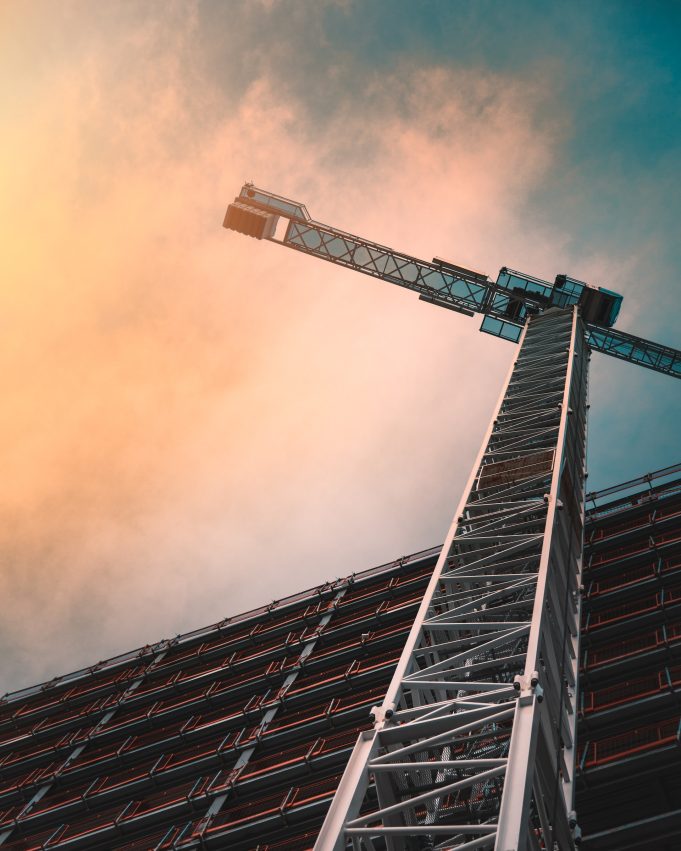The use of advanced alloys in construction and infrastructure projects has been steadily rising over the past decade. As civil engineers and architects push the boundaries of design, they require stronger and more versatile materials to bring their visions to life. Premium alloys made from aluminum, steel, titanium, and other metals are filling this need with their superior mechanical properties and corrosion resistance. This article will explore the key drivers propelling the adoption of high-performance alloys, the ways they are transforming buildings and infrastructure, and the promising future of these advanced materials.
Construction design has come a long way from simple wood and concrete structures. Today’s architects envisage buildings with complex geometries and engineers require materials that can meet stringent strength-to-weight ratios for bridges. Traditionally used alloys like structural steel do not always fulfill these modern requirements efficiently. This has led to the emergence of premium alloys made by altering the microstructure of metals through processes like heat treatment and alloying. The superior strength, toughness, and corrosion resistance offered by these advanced alloys enable the construction of resilient and innovative structures. Their unique benefits make premium alloys ideal for the infrastructure needs of the 21st century.
High-Strength Aluminum Alloys
Aluminum has become a go-to metal for construction due to its light weight, formability and corrosion resistance. While pure aluminum is soft and weak, the addition of alloying elements like copper, zinc and magnesium creates high-strength aluminum alloys. Two of the most common strong aluminum alloys are 6061 and 7075, which have yield strengths significantly higher than mild steel.
High-strength aluminum alloys allow engineers to design structural elements that are light yet rigid. Using aluminum instead of steel cuts down the dead load on buildings and bridges, enabling large spans and reducing foundation requirements. Aluminum’s resistance to corrosion makes it suitable for facades, roofing and other exterior applications. Aluminum alloys can be easily extruded into complex cross-sections optimal for structural designs.
Advanced aluminum alloys enable construction that pushes the limits on size and shape while being durable and requiring less material. Their light weight also makes construction and transportation easier. These versatile alloys will continue to facilitate imaginative and efficient building design.
High-Performance Stainless Steel Alloys
Stainless steel contains alloying elements like chromium and nickel that give it impressive oxidation and corrosion resistance. While ordinary stainless steel alloys like 304 and 316 have been used in construction, high-performance stainless steels exceed them in strength, toughness and environmental stability.
Duplex stainless steels have a mixed microstructure of ferrite and austenite that delivers double the strength of conventional stainless steel along with toughness. The addition of nitrogen further boosts the mechanical properties of duplex steels. Their combination of strength and corrosion resistance enables the construction of resilient, low-maintenance structures.
Precipitation-hardening grades like 17-4PH stainless steel are often used in the form of 17-4 ph round bar for structural sections needing high fatigue strength. The hardness and corrosion resistance of precipitation hardening stainless steels make them suitable for long-lasting infrastructure applications.
Advanced stainless steel alloys enable lighter structures that resist corrosion and extreme environments. Their unique properties make them well suited for sustainable infrastructure. Stainless steel alloys will continue to see greater utilization in demanding construction projects.
Titanium Alloys for Structures
Titanium is valued for its very high strength-to-weight ratio and corrosion resistance. Alloying elements like aluminum, vanadium and molybdenum produce strong titanium alloys comparable to steel yet almost 50% lighter. This makes them ideal for designs requiring light weight and high strength.
The small density of titanium alloys enables remarkable reductions in dead load compared to steel structures. Their excellent load-bearing capacity relative to weight makes them suitable for movable structures like bridges and retractable roofs. Titanium alloys work in a wide temperature range and resist corrosion in marine environments.
Constructing with titanium alloys allows engineers to push the envelope on spanning capability due to their lightness. Iconic structures like the Guggenheim Museum Bilbao with its advanced titanium facade would not be feasible with other metals. The future will see more ambitious architectures relying on the unparalleled strength, low weight and corrosion resistance of titanium alloys.
Nickel Alloys for Extreme Environments
Nickel-based alloys have outstanding corrosion and heat resistance, making them critical where durability in extreme environments is needed. Superalloys based on nickel-chromium excel at high-temperature strength and fatigue resistance above 1000°F while resisting oxidation and corrosion.
Nickel alloys enable construction in the most demanding settings. They are essential for pressure vessels and piping in chemical plants, offshore oil platforms and nuclear power plants where strong and non-corroding materials are critical. Nickel-chromium alloys clad the exterior of skyscraper facades to maintain attractive appearances despite weathering.
As sustainability becomes more important, designers will increasingly tap nickel alloys to construct infrastructure that withstands time and nature. Bridges, power plants and processing facilities will utilize these alloys for critical components in hot, corrosive environments. With their unparalleled environmental stability, nickel alloys will play an essential role in resilient, long-lasting construction.
High-Strength Steels with Alloying
While ordinary structural steel is a backbone of construction, alloyed high-strength steels provide exceptional performance for demanding applications. Small additions of elements like chromium, nickel, silicon and vanadium alter the microstructure of steel to achieve great hardness and toughness.
Advanced high-strength steels enable lighter and safer structures. Their high tensile strength allows reduction of member sizes without sacrificing structural integrity. High-strength steels also absorb significantly more impact energy, enhancing deformation resistance during earthquakes.
Alloyed steels are enabling awe-inspiring yet resilient buildings and bridges. They balance the conflicting needs for reduced weight and exceptional stability. Continued innovation in steel metallurgy will provide even cleaner, stronger alloys for sustainable, resilient construction.
Integration of Premium Alloys in Construction
Advanced alloys must be integrated appropriately within projects to utilize their benefits safely and economically. Careful engineering analysis helps balance design performance with material costs.
Lightweighting of structural frames through premium alloys cut costs indirectly by reducing foundation requirements. Their high toughness and ductility guard against brittle failures. Premium alloys also boost lifecycle cost savings through reduced maintenance needs.
Several construction techniques are ideal for exploiting the capabilities of modern alloys. Modular construction using prefabricated alloy components streamlines on-site assembly. Cutting-edge methods like additive manufacturing enable unprecedented alloy geometries and customization. Sophisticated analysis and integration are essential for rationally leveraging premium alloys.
Conclusion
Advanced high-performance alloys are transforming the possibilities for modern construction and infrastructure. Aluminum, stainless steel, titanium and nickel alloys enable designs limited only by imagination, not materials. With their exceptional strength, resilience, durability and lightweight, premium alloys are driving a new era in sustainable and innovative building. Continued alloy development and creative integration will see high-performance metals becoming essential and economically viable for the most demanding applications. The full potential of premium alloys is still being unlocked, promising exciting new frontiers in construction that were previously infeasible.










